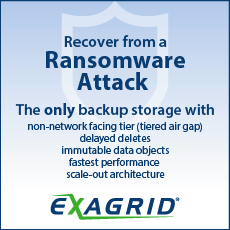Xinnor and Intel Solution Brief Shows xiRAID Opus Enables High-Performance Storage on Energy-Efficient Intel Xeon E-Cores
Continuing its iterations on various platforms and configurations
This is a Press Release edited by StorageNewsletter.com on November 28, 2025 at 2:00 pmXinnor, a player in high-performance software-defined storage solutions, has partnered with Intel Corp. to demonstrate how xiRAID Opus transforms energy efficient Intel Xeon CPUs into viable solutions for high-performance storage workloads previously requiring power-hungry processors.
![]()
The companies will discuss these breakthrough results in a webinar titled “Breaking Boundaries in Energy-Efficient Storage Performance” on December 11 at 5pm CET / 8am PST.
The webinar follows the release of a comprehensive solution brief detailing collaborative testing results between Xinnor and Intel. The testing demonstrated that xiRAID Opus transforms Intel Xeon 6 E-core processors into viable solutions for high- performance storage, a task previously out of their league. Using just 8 cores, the solution achieved 96% efficiency (1.1M IOPS) for RAID6 random writes and 94% efficiency (42.3GB/s) for RAID6 sequential writes, while maintaining native sub-10μs latencies. For RAID10 configurations, E-cores delivered 100% efficiency (1.79M IOPS) on random writes and 83% (25.1GB/s) on sequential writes with the same core count.
“Traditional approaches force you to choose between performance and efficiency, or accept severe latency penalties to boost IOPS on E-cores,” said Dmitry Livshits, CEO, Xinnor. “xiRAID Opus eliminates this compromise entirely. xiRAID Opus architecture enables Intel E-core Xeon CPUs to become competent, cost- and power-efficient solutions for storage workloads that were previously impossible without high-power processors. Our customers can now maximize both performance and resource efficiency simultaneously.”
Intel Xeon 6 E-core processors excel at highly parallelized workloads and deliver up to 1.6 times better performance per watt compared to previous generation processors.
However, out of the box, E-cores become a bottleneck for storage workloads involving sequential writes and random reads. Traditional solutions attempt to overcome this limitation using interrupt coalescing, which can boost raw IOPS but increases random write latencies by approximately 10x and random read latencies by approximately 2x, making the trade-off impractical for most production environments.
The Xinnor-Intel collaboration proves an alternative approach is possible. xiRAID Opus’s user-space polling architecture bypasses kernel I/O stack limitations, delivering high IOPS with native-level latencies.
“Intel Xeon 6 E-core processors deliver exceptional performance-per-watt for the right workloads,” said Sonel Popatlal, EMEA leader, DC, AI, client and gigafactory, Intel. “Xinnor’s architecture demonstrates how innovative software design can unlock E-core capabilities for demanding storage applications. By maximizing efficiency per core while maintaining native latency levels, xiRAID Opus helps organizations achieve their performance goals without the power and cost overhead of traditional high-core-count deployments.”
The December 11 webinar will feature Davide Villa, CRO, Xinnor, Dmitry Livshits. CEO, Xinnor, and Evgueny Khartchenko, staff SW application engineer, Intel. The speakers will present detailed performance data across different core counts and RAID configurations, explain the technical advantages of user-space polling architecture, and discuss practical considerations for organizations looking to optimize storage infrastructure for both performance and energy efficiency.
Key topics include:
- How xiRAID Opus achieves high IOPS with native latency levels on energy-efficient CPUs
- Performance and efficiency metrics across RAID6 and RAID10 configurations with different CPU core counts
- Why traditional Interrupt Coalescing creates unacceptable latency penalties and how xiRAID Opus solves this
- Architectural considerations for maximizing performance-per-watt in modern storage infrastructure
The session is designed for storage engineers, data center architects, IT infrastructure managers, and technical decision makers who need to balance performance requirements with power consumption, budget constraints, and sustainability goals.
Register for the webinar here and download the solution brief here.













 Subscribe to our free daily newsletter
Subscribe to our free daily newsletter

